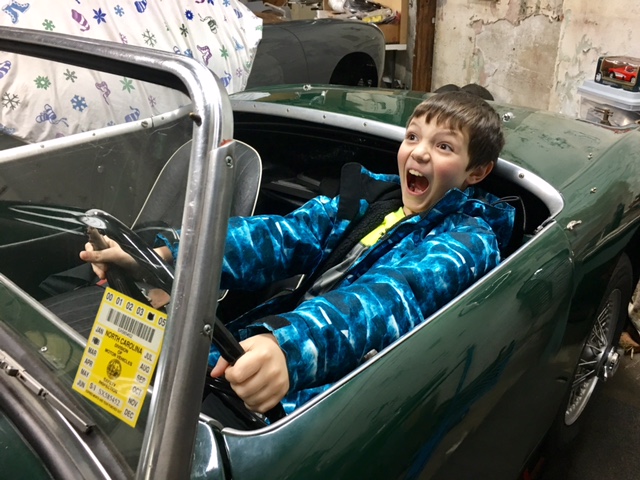
The pieces are coming together.
I maintain that the only way to get kids involved with our old cars is to engage them from a very early age. Old cars should just be one of the many hobbies and sports they enjoy.
In his after-school classes, my 9-year-old Bradley is taking computer coding — and learning to build rescue-bots. For him, the 1960 Bugeye Sprite is a cross between a giant Lego and a robotics project.
We paid a visit to Chip Starr’s Race Car Resurrections last weekend to visit the Bugeye. We toured his shop, and Chip gave us an update.
With a car that is nearly 60 years old, one of the most formidable tasks is to figure out exactly what has been done to it over the years. As Sprites have never had high values, the quality of work that was done to them was suspect at best — and dangerous at worst.
When we bought this car last year, I was looking for a decent driver. Something without major needs. My plan was for Bradley to develop a checklist, so that before we took out “his car,” he would check the oil, water, and tire pressures. He could learn to shift the gears from the passenger seat.
It hasn’t exactly turned out that way — to no one’s surprise. The race-built 948-cc engine in the car was nearly impossible to drive on the street. Each thing we tried to make it “more drivable” just seemed to make the problems worse.
A re-buildable 1,275-cc core came with the car. Chip recommended that rather than spend any more time on the 948, that he simply move forward on the 1,275-cc engine. At the same time, he sourced a 3.7 rear end to replace the stock 4.22. The larger engine can pull the higher ratio, and that change will make for more relaxed cruising. Relaxed is a relative term, of course.
Chip has raced Bugeyes, and he is well connected within the Spridget network. That has made a huge difference. We sourced a many of the new parts through Moss Motors, and they’ve been very helpful.
The engine is finished and ready to be installed. Last-minute details included Chip finding a bad rear u-joint. He is replacing that now, as it is a much easier job before the drivetrain is installed. Chip also has rerouted the gas line, so it doesn’t pass so near the exhaust system. He’s found a good used header, and we are having it ceramic coated before installing it.
When finished, “Buggy” (Bradley’s name for the car) will have a lot of eyeball, with its painted wire wheels and attractive — although incorrect — British Racing Green paint. It will have the most desirable upgrades, including an aluminum radiator, front disc brakes, the bigger motor and high-speed rear end.
I very much like that it still has its puny, fragile front bumper — something you rarely see these days, as most have been damaged and removed.
This project wouldn’t be moving along at this clip if it weren’t for Chip’s background knowledge and his attention to detail.
He’s hoping to have the car back on the street by the end of February. The Austin-Healey Northwest Meet occurs in May, about 60 miles from Portland in Hood River, Oregon. I would like to attend it with Bradley in “his” car.
I’m glad he’s gotten to see the car disassembled — and watch the pieces come back together. The car isn’t a mystery to him. It’s just a big puzzle that’s being reassembled. Simply another hobby and project.
While we were at the shop, he asked if I could teach him how to change sparkplugs…
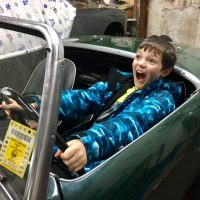
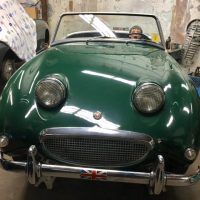
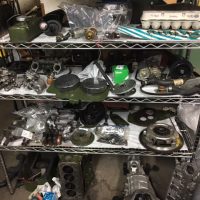
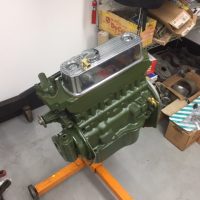
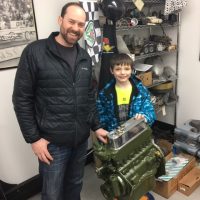
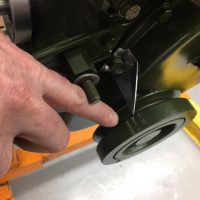
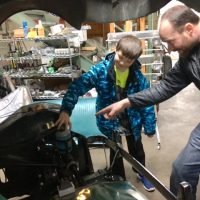
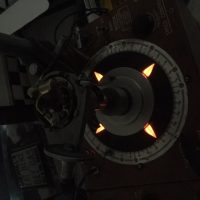
Your Bugeye brings back fun memories. I bought my red 59 Bugeye from a hippie chick in Woodstock, NY for $300.00 in 1967. Fun little bug , thanks for your story.
In the 1980’s I raced a Midget in SCCA H Production, can’t imagine ever making one of my race motors street-able. With 13.5 to compression, static ignition timing at 32 and a cam that required a 3,000 rpm idle and 9,200 rpm redline resulting in a whopping 92 HP (from 948cc), it was pretty uncivilized under 5,000 rpm. Keep in mind that is about the redline of a stock engine.